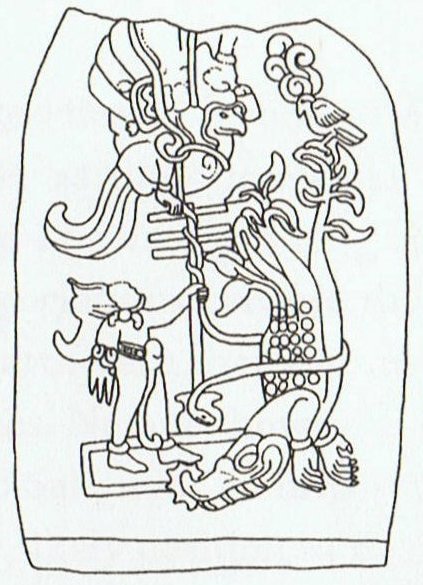|
end of Old Sun |
4 black nights |
birth of
New Sun |
 |
 |
 |
 |
 |
 |
|
Ca4-20 |
Ca4-21 |
Ca4-22 |
Ca4-23 |
Ca4-24 |
Ca4-25 (101) |
Not so difficult. A gecko is an
insectivore. Therefore he transforms
insects by swallowing them.
...
From a religious point of view, the high regard for
flies, whose increase or reduction causes a similar
increase or reduction in the size of the human
population, is interesting, even more so because
swarms of flies are often a real nuisance on Easter
Island, something most visitors have commented on in
vivid language. The explanation seems to be that
there is a parallel relationship between flies and
human souls, in this case, the souls of the unborn.
There is a widespread belief throughout Polynesia
that insects are the embodiment of numinous beings,
such as gods or the spirits of the dead, and this
concept extends into Southeast Asia, where insects
are seen as the embodiment of the soul ...
Manu rere
(the free-moving spirits of life) must
sooner or later be 'incorporated' again:
... Then the spirit
was gathered in. And this was the
chant for that work:
Let the spirit of the
man be gathered to the world of
being, the world of light. / Then
see. Placed in the body is the
flying bird, the spirit-breath. /
Then breathe! / Sneeze, living
spirit, to the world of being, the
world of light. / Then see. Placed
in the body is the flying bird, the
breath. / Be breathing then, great
Tu. Now live!
Then man existed, and
the progeny of Tu increased
...
Birds and flying insects are the same -
manu rere ('flying birds').
Instead of shooting away the 'fire' in
the 'eye' of the Old year the method
according to rongorongo seems to have
been to say that it was 'swallowed'. The
swallowing method was known also in
Hawaii:
... The
Makahiki effigy is dismantled and hidden away
in a rite watched over by the king's 'living god',
Kahoali'i or 'The-Companion-of-the-King', the
one who is also known as 'Death-is-Near' (Koke-na-make).
Close kinsman of the king as his ceremonial double,
Kahoali'i swallows the eye of the victim in
ceremonies of human sacrifice ...
After half a year the shark (mago)
comes in as another great swallower and
as such the concept is more in parallel
with the ideas in America:

A crocodile is close in kind to a shark.
The picture is from Izapa Stela 25
according to Maya Cosmos. The
3-fingered One Ahaw is holding
the Tree in which 7-Macaw perches
and with his foot One Ahaw stands on the
snout of the 'Cosmic Monster'. The
picture probably shows the 'shark of winter' at
right:
... In the island of Pukapuka Te
Mango, the Shark, was applied to the
long dark rift which divides the Milky
Way from Scorpius to Cygnus. They
declared that the 'shark of winter' had
its head to the south and the 'shark of
summer' had its head to the north,
referring to the seasonal change in the
position of the constellation ...